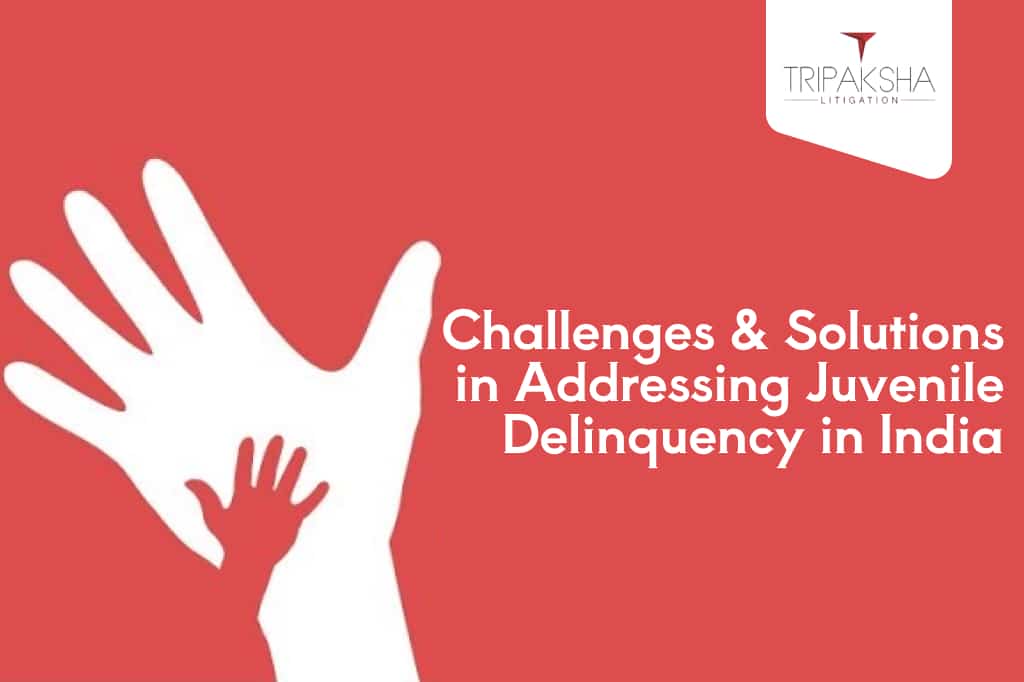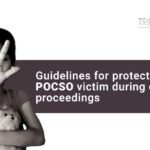Introduction
Juvenile delinquency, denoting unlawful conduct committed by individuals under the age of 18, has emerged as a pressing issue within the Indian context, notably given the predominant youth demographic. According to data from the National Crime Records Bureau (2019), over 39,000 juveniles were apprehended for various transgressions. The term encapsulates a wide spectrum of proscribed behaviors among minors, necessitating societal censure and warranting corrective measures in the public interest. Consequently, a juvenile is construed as an adolescent navigating the transition from childhood to adulthood, potentially susceptible to delinquent tendencies if not duly addressed.
These behaviors encompass acts ranging from vandalism, theft, and substance abuse to gang involvement and violent conduct. Juvenile delinquency embodies a multifaceted legal and social challenge, originating from diverse factors such as familial discord, socioeconomic deprivation, peer influence, substance dependency, and psychological ailments.
Juvenile delinquency poses a significant concern affecting communities, families, and individuals, with enduring ramifications for both the individual and the societal fabric. An informed understanding of its root causes is indispensable for prevention and timely intervention, ensuring the provision of requisite support and resources to those vulnerable to delinquency. The criminal justice system and social welfare agencies occupy pivotal roles in addressing juvenile delinquency and facilitating the rehabilitation of youthful offenders.
Legal Progression of Juvenile Legislation in India
The jurisprudential trajectory of juvenile legislation in India can be delineated from the promulgation of the Children Act, 1960. This legislation was enacted with the overarching aim of furnishing care, protection, and requisite treatment to individuals under the age of 18 who find themselves in circumstances necessitating such intervention. Subsequently, in 1986, the legislative landscape saw a significant shift with the introduction of the Juvenile Justice Act (JJA), supplanting the Children Act. The JJA, crafted with the aim of establishing a comprehensive framework for the protection of children, particularly emphasizes the paramountcy of the best interests of the child (Pranjape, 2022).
The JJA underwent substantive amendments in 2000 and 2006, aimed at fortifying the edifice of child rights protection and specifically addressing concerns pertinent to juveniles entangled in the web of legal conflict. These amendments, notably, entailed the elevation of the age threshold for juveniles from 16 to 18 years, thus aligning with the precepts enshrined in the Convention on the Rights of the Child. This recalibration was undertaken with the dual objective of ensuring juveniles are not subjected to the rigors of the adult criminal justice system and instituting a bespoke framework tailored to the exigencies of juvenile justice (Mishra, 2022).
Further legislative refinement was witnessed in 2011, ultimately culminating in the promulgation of the Juvenile Justice (Care and Protection of Children) Act, 2015. The JJ Act, 2015 heralds a more comprehensive legislative apparatus geared towards the holistic care, protection, and rehabilitation of minors. It introduces a restorative justice paradigm, foregrounding the imperatives of reformative measures and rehabilitation over punitive sanctions.
Additionally, the JJ Act, 2015 encompasses provisions for the establishment of specialized juvenile justice adjudicatory bodies, including Juvenile Justice Boards and Child Welfare Committees. These adjudicatory entities are meticulously structured to ensure the efficacious implementation of the legislative mandate, thereby guaranteeing that decisions impacting juveniles are imbued with a steadfast commitment to their paramount welfare.
Factors Contributing to Juvenile Delinquency: A Legal Analysis
The burgeoning phenomenon of juvenile delinquency in contemporary society bespeaks a multifaceted confluence of factors, each bearing legal ramifications warranting rigorous scrutiny. Within the realm of legal discourse, the elucidation of these contributory elements assumes paramount importance in formulating effective policy frameworks and adjudicatory interventions. Several pivotal factors, delineated herein, encapsulate the intricate nexus between socio-legal dynamics and juvenile delinquency:
Family Dysfunction: Within the purview of legal analysis, familial discord emerges as a salient antecedent to juvenile delinquency, fraught with implications for child welfare and protection laws. Instances of parental neglect, abuse, or marital dissolution precipitate profound ramifications for familial structures, permeating into the legal domain through mandates for intervention and rehabilitation. The legal imperative to safeguard the best interests of the child, enshrined within domestic legislation and international conventions, underscores the imperative for judicial and social interventions aimed at mitigating familial discord’s deleterious impact on juvenile behavior.
Peer Influence: In legal parlance, the phenomenon of peer pressure assumes jurisprudential significance, implicating notions of individual autonomy, susceptibility to external influences, and culpability. The coercive influence exerted by peer groups, often predicated on the imperative for social acceptance and validation, engenders ethical and legal quandaries pertaining to juvenile agency and culpability. Legal frameworks governing juvenile justice must navigate the delicate balance between punitive measures and rehabilitative interventions, cognizant of juveniles’ susceptibility to external influences and peer coercion.
Mental Health Challenges: Legal considerations surrounding juvenile delinquency intersect with the realm of mental health jurisprudence, delineating the legal imperatives governing diagnosis, treatment, and rehabilitation. The recognition of mental health afflictions as mitigating factors in juvenile offending underscores the legal mandate for holistic interventions encompassing therapeutic modalities, psychosocial support, and judicial discretion in sentencing. The imperative for legal frameworks to uphold juveniles’ right to mental health parity resonates within the ambit of international human rights instruments, demanding nuanced legal responses to juveniles grappling with mental health challenges.
Economic Deprivation: Within the legal discourse on juvenile delinquency, socioeconomic disparities evoke legal imperatives for equitable access to justice, social welfare, and economic opportunities. Legal frameworks governing juvenile justice must navigate the complex terrain of poverty’s interplay with delinquent behavior, encompassing legal mandates for socioeconomic empowerment, access to education, and targeted interventions addressing poverty’s criminogenic effects. The imperative for legal systems to uphold juveniles’ rights to economic dignity and social inclusion underscores the legal mandate for proactive interventions addressing economic deprivation’s nexus with juvenile offending.
Substance Abuse: From a legal standpoint, juvenile involvement in substance abuse implicates legal imperatives for addiction treatment, rehabilitation, and legal accountability. Legal frameworks governing juvenile justice must navigate the complex terrain of substance abuse’s interplay with delinquent behavior, encompassing mandates for substance abuse education, early intervention programs, and diversionary measures aimed at rehabilitation. The imperative for legal systems to uphold juveniles’ rights to addiction treatment and rehabilitation resonates within the ambit of international human rights instruments, demanding comprehensive legal responses to substance abuse’s criminogenic effects.
Neighborhood Environment: Legal considerations surrounding juvenile delinquency extend to the legal imperatives governing neighborhood revitalization, community policing, and social welfare interventions. Legal frameworks governing juvenile justice must navigate the intricate nexus between neighborhood characteristics and delinquent behavior, encompassing legal mandates for community-based interventions, social cohesion initiatives, and targeted interventions addressing neighborhood-level risk factors. The imperative for legal systems to uphold juveniles’ rights to a safe and supportive neighborhood environment underscores the legal mandate for proactive interventions fostering community resilience and social cohesion.
Legal Perspectives on Charges of Sexual Offenses Involving Minors
Allegations concerning sexual offenses against minors prompt profound legal scrutiny and societal concern. While conventional assumptions often attribute such crimes predominantly to adult males targeting women and children, recent developments underscore a more nuanced reality, wherein minors themselves may be implicated in perpetrating such offenses.
The legal discourse on juvenile delinquency has gained momentum since the late 1980s, propelled by growing apprehension surrounding youthful transgressions. Notable instances of serious crimes committed by children and adolescents have prompted criminologists to intensify efforts aimed at understanding and addressing this complex phenomenon. The proliferation of reported rape incidents within the country underscores the urgency of comprehending the multifaceted factors contributing to such offenses. Factors such as entrenched patriarchal norms, imbalanced sex ratios, and systemic deficiencies compound the prevalence of these crimes. Consequently, legal frameworks have evolved to incorporate measures encompassing legislative reforms, awareness initiatives, and empowerment programs geared towards fostering a safer environment for all individuals, particularly minors.
Approaching these matters with due sensitivity is paramount, recognizing the potential involvement of individuals of all ages and genders in perpetrating sexual offenses. Emphasizing educational initiatives, preventive strategies, and judicious legal interventions is essential to safeguarding the welfare and security of minors and society at large.
Victim Compensation in Cases of Offenses Against Women
Rape represents a grave infringement on fundamental rights, both at the individual and societal levels. The Supreme Court of India has aptly characterized rape not only as an offense against the individual victim but as a crime against society as a whole, given its pervasive psychological and social repercussions.
In response to the inadequacies in legal provisions pertaining to sexual offenses against women and children, the enactment of the Criminal Law (Amendment) Act, 2013 led to the establishment of the Nirbhaya Fund. This fund, dedicated to initiatives aimed at enhancing the safety and welfare of women and children, represented a pivotal step towards addressing systemic deficiencies. Concurrently, the Central Victim Compensation Fund Scheme, instituted by the Central Government in 2015, sought to provide redressal to victims of sexual offenses.
Nevertheless, concerns persist regarding the underutilization of significant portions of the Nirbhaya Fund after seven years, with numerous minor rape victims remaining uncompensated. These challenges underscore bureaucratic hurdles and inefficiencies in fund disbursement.
In response to the imperative for victim compensation, the Supreme Court directed the National Legal Services Authority (NALSA) to formulate Model Rules for Victim Compensation for sexual offenses and acid attacks. The ensuing Compensation Scheme for Women Victims/Survivors of Sexual Assault/other Crimes, finalized in 2018, delineates minimum and maximum compensation thresholds for various offenses.
The scheme accords victims of gang rape a minimum compensation of Rs. 5 lakhs, extendable up to Rs. 10 lakhs. Similarly, victims of rape and unnatural sexual assault are entitled to a minimum compensation of Rs. 4 lakhs, with a maximum of Rs. 7 lakhs. Notably, victims of acid attacks resulting in facial disfigurement are eligible for a minimum compensation of Rs. 7 lakhs, with a maximum of Rs. 8 lakhs.
The Supreme Court’s endorsement of this scheme as applicable nationwide establishes it as the prevailing legal framework governing victim compensation for sexual offenses in India.
Ensuring the effective implementation of compensation schemes and delivering requisite support and justice to victims of sexual offenses remain imperative legal imperatives. Addressing bureaucratic impediments to streamline fund disbursal and ensuring timely and adequate compensation to victims represent critical endeavors in this regard.
The enactment of the Protection of Children from Sexual Offences Act, 2012 (POCSO Act) signifies a pivotal legal development instituted by the Indian Parliament aimed at fortifying the legal apparatus to safeguard minors from the scourge of sexual abuse. Instituted on May 22, 2012, and enforced from November 14, 2012, this legislative measure delineates a comprehensive framework tailored to shield individuals below the age of 18 years, denoted as children under statutory interpretation.
Central to the POCSO Act is the imperative of expeditious action and redressal for victims, manifesting through specialized procedural mechanisms meticulously crafted for reporting, documenting, and investigating complaints concerning sexual offenses perpetrated against minors. This statutory edifice endeavors to foster a judicious milieu attuned to the exigencies of juvenile victims, thereby striving to mitigate the psychological trauma endured throughout the investigative and adjudicative phases.
The ambit of the POCSO Act extends beyond the mere commission of offenses to encompass acts of aiding, abetting, or facilitating the sexual exploitation of a child, thereby rendering such actions legally reprehensible. This expansive delineation of culpability underscores the legislative intent to hold accountable those who enable or collude with perpetrators in perpetrating such heinous acts.
In furtherance of expeditious justice dispensation, the POCSO Act mandates the adjudication of cases in specialized children’s courts, exclusively designated to adjudicate matters falling within its purview. These adjudicatory fora are equipped with specialized facilities and personnel adept at navigating the intricacies of cases involving minors, thereby ensuring an environment conducive to fair and sensitive trial proceedings. Provisions are also instituted to shield child victims from potential re-traumatization during the trial process, safeguarding them from direct confrontation with the accused while providing testimony.
Despite the instrumental role and imperative of the statutory provisions enshrined within the POCSO Act, challenges persist in terms of awareness dissemination and effective implementation. Concerted endeavors are indispensable to augment public awareness surrounding the legal tenets of the act, fortify implementation mechanisms, and furnish requisite support and rehabilitative measures to victims of child sexual offenses, thereby upholding the sanctity of juvenile rights within the legal milieu.
Introduction and Functions of the Juvenile Justice Board
Within the legal framework of India, the Juvenile Justice Board (JJB) stands as a specialized judicial entity tasked with the adjudication of matters concerning juveniles. Enshrined under the auspices of the Juvenile Justice (Care and Protection of Children) Act, 2015, this board assumes a paramount role in the administration of juvenile justice throughout the nation.
Comprising a magistrate alongside two appointed social workers or child welfare experts, one of whom must be a female member, the JJB operates with a steadfast commitment to ensuring the protection of juvenile rights during legal proceedings and the formulation of bespoke measures aimed at their care and rehabilitation.
The stipulated composition of the bench, as delineated under the Juvenile Justice Act, 2015, mandates the inclusion of a Metropolitan Magistrate or Judicial Magistrate First Class (Principal Magistrate) possessing a requisite tenure of three years, alongside two social workers, one of whom is mandated to possess a minimum of seven years of active involvement in child-centric welfare activities or hold professional credentials in fields pertinent to child welfare.
Endowed with the authority to conduct preliminary assessments of juveniles accused of heinous offenses, the JJB undertakes a nuanced evaluation of the mental and emotional maturity of the juvenile offender, discerning their capacity to comprehend the gravity of their actions. In instances where the juvenile demonstrates a sufficient level of understanding, the JJB reserves the prerogative to sanction their trial as an adult, thereby underscoring the gravity of the alleged transgressions.
In cases where guilt is established, the JJB assumes the onus of delineating appropriate sentences or rehabilitation plans tailored to the unique circumstances of each juvenile offender. Such measures may entail placement within specialized facilities wherein juveniles receive holistic support encompassing education, counseling, and vocational training, thus fostering their rehabilitation and eventual reintegration into the societal fabric.
Treatment of a Juvenile as an Adult in Specific Circumstances
Within the legal framework of India, provisions exist delineating circumstances under which a juvenile may be subject to treatment akin to that of an adult. Section 4 of the Juvenile Justice (Care and Protection of Children) Act, 2015 mandates the establishment of the Juvenile Justice Board, entrusted with the solemn duty of conducting inquiries and hearings concerning juveniles entangled in legal disputes. Under this legislative ambit, juveniles aged between 16 and 18 may face trial as adults if accused of heinous offenses, defined as transgressions carrying penalties of death or imprisonment for a duration exceeding seven years.
Upon a juvenile being implicated in a heinous offense, the Juvenile Justice Board assumes the mantle of adjudication, empowered to initiate a preliminary assessment. This evaluative process seeks to discern whether the nature of the offense bespeaks impulsive behavior characteristic of childhood or if the juvenile, by virtue of their mental and emotional maturity, comprehended the ramifications of their actions. Should the Board ascertain the latter, they reserve the authority to authorize trial proceedings conducted as if the juvenile were an adult.
The matter of treating juveniles as adults engenders spirited debate within legal circles, drawing upon diverse perspectives. While some assert that juveniles are yet to attain the requisite cognitive and emotional development necessary for a nuanced understanding of their actions’ consequences, others advocate for prudence, advocating for a judicious evaluation of the individual’s mental and emotional faculties before adjudging their culpability.
General Procedure of the Juvenile Justice Board in India
The Juvenile Justice Board (JJB) in India operates under a rehabilitative paradigm, emphasizing the reformation and rehabilitation of juvenile offenders over punitive measures, as underscored in legal literature (Admin, Juvenile Justice And Its Procedure In India, 2020).
Outlined below is the procedural framework typically followed by the Juvenile Justice Board of India:
Notification to JJB: Any individual or the police may formally bring to the attention of the JJB a juvenile alleged to be in conflict with the law.
Preliminary Inquiry: The JJB initiates an initial inquiry to ascertain the juvenile’s involvement in the purported offense. Should the JJB deem the offense severe, jurisdiction may be transferred to the Children’s Court.
- Social Investigation Report: Upon assuming jurisdiction, the JJB commissions a comprehensive social investigation report, delving into the juvenile’s background, familial circumstances, and other relevant factors.
- Determination of Course of Action: Informed by the social investigation report, the JJB deliberates on the most appropriate course of action for the juvenile. This may entail diversionary programs, counseling, probationary measures, or placement in a specialized rehabilitation facility.
- Detailed Inquiry and Final Order: In the event of the juvenile’s placement in a specialized facility, the JJB conducts a meticulous inquiry before issuing a final order.
- Ensuring Care and Protection: Throughout the trial proceedings, the JJB ensures the juvenile’s receipt of adequate care and protection.
- Sentencing: In instances of guilt, the JJB discerns an appropriate sentence aimed at reform and rehabilitation rather than punitive retribution.
- Protection of Juvenile Rights: The JJB remains vigilant in safeguarding the rights of the juvenile throughout the trial process, ensuring procedural fairness and adherence to legal principles.
Powers and Functions of the Juvenile Justice Board: A Legal Perspective
- Conducting Preliminary Inquiries: The Juvenile Justice Board (JJB) assumes the pivotal responsibility of conducting preliminary inquiries to meticulously ascertain the factual veracity of allegations lodged against juveniles. Should the nature of the alleged transgression be deemed severe, the JJB retains the discretionary authority to contemplate transferring the case to the Children’s Court (WADHWANI, 2020).
- Conducting Social Investigations: Central to its mandate, the JJB conducts exhaustive social investigations aimed at elucidating the nuanced intricacies of the juvenile’s background, familial dynamics, and other salient contextual factors. These investigations serve as a foundation for informed decision-making concerning the most judicious course of action.
- Diversion of Cases: Endowed with discretionary powers, the JJB can effectuate the diversion of cases away from traditional judicial channels, steering them towards alternative dispute resolution mechanisms such as counseling, mediation, and probation.
- Placement in Special Homes: In instances warranting specialized care and rehabilitation, the JJB possesses the authority to prescribe the placement of juveniles in designated special homes, meticulously calibrated to facilitate reformative and rehabilitative objectives.
- Medical and Psychiatric Evaluations: Empowered by legal mandate, the JJB is vested with the prerogative to mandate comprehensive medical and psychiatric evaluations of juveniles, aimed at comprehensively assessing their mental and physical well-being, thereby furnishing invaluable insights pivotal to informed decision-making processes.
- Provision of Care and Protection: Throughout the entirety of trial proceedings, the JJB diligently ensures the provision of requisite care and protection to juveniles, steadfastly safeguarding their welfare and interests.
- Adjudication of Cases: In instances culminating in a determination of guilt, the JJB assumes the solemn responsibility of delineating an equitable punishment or sentence, invariably oriented towards fostering reformative and rehabilitative outcomes, rather than punitive retribution.
- Protection of Juvenile Rights: Anchored in the ethos of justice, the JJB unwaveringly upholds the inviolable rights of juveniles throughout the legal adjudication process, steadfastly ensuring procedural equity and unwavering adherence to established legal tenets (Dave, 2020).
The Borstal System: A Legal Examination
The Borstal System, prevalent in several jurisdictions including the United Kingdom, India, and various Commonwealth nations, embodies a distinctive approach to the rehabilitation of youthful offenders. Its nomenclature derives from the foundational Borstal Prison established in England in 1902 (Pranjape, 2022).
Characterized by its stringent structure and disciplined environment, borstal institutions are expressly designed to address the needs of young offenders adjudged guilty of criminal acts. Rooted in the principles of reform and rehabilitation, these institutions prioritize educational instruction, vocational training, and disciplined routines, all aimed at curbing recidivism (J, 2018).
Within borstal facilities, juveniles are exposed to basic educational curricula, life skills training, and vocational education encompassing trades such as carpentry, metalwork, and agriculture. Furthermore, emphasis is placed on inculcating a sense of self-discipline, obedience, and accountability, complemented by physical activities and sports. Borstals were conceived as a progressive alternative to conventional prisons, placing a premium on redemption over punitive measures (Tripathi, 2020).
In India, the Borstal System was introduced during the colonial era, with the establishment of the inaugural Borstal School in Bangalore in 1911. This paradigm shift in the treatment of juvenile delinquency sought to supplant punitive approaches with educational and rehabilitative interventions (Ahuja, 2020).
Enshrined within this framework, Borstal Schools across India aim to deliver educational, vocational, and counseling services to offenders aged 16 to 21 years. These institutions offer a spectrum of vocational training initiatives, encompassing trades such as carpentry, tailoring, welding, and agriculture. Nonetheless, criticisms have surfaced regarding the efficacy of the Indian Borstal System, with concerns raised about overcrowding, staff shortages, and deficiencies in training programs. Consequently, there is a growing impetus for reforms to optimize the efficacy of the Borstal System and align it more closely with its rehabilitative objectives.
In summation, juvenile delinquency emerges as a profound legal concern impacting both adolescent individuals and societal well-being. This phenomenon pertains to the unlawful conduct exhibited by minors, typically falling below the age of 18, who transgress statutory provisions or engage in activities deemed injurious to themselves or others. The etiology of juvenile delinquency encompasses a diverse array of factors, including socioeconomic deprivation, familial discord, peer influence, educational disparities, substance misuse, mental health afflictions, and exposure to adverse experiences such as violence and trauma.
Effectively addressing juvenile delinquency mandates the adoption of a holistic approach, emphasizing prevention, early intervention, and rehabilitative measures. This encompasses strategic investment in educational and vocational initiatives, provision of counseling and mental health support services, cultivation of positive familial and communal ties, and the application of restorative justice principles.
Moreover, imperative to this endeavor is the imperative of reform within the juvenile justice system, ensuring equity, efficacy, and a rehabilitative ethos. This entails the promotion of diversionary programs, exploration of non-custodial alternatives, and the safeguarding of the rights and dignity of young individuals throughout legal proceedings.
In essence, a collective acknowledgment of juvenile delinquency’s multifaceted nature underscores the necessity for concerted societal collaboration. Through sustained commitment to prevention and rehabilitation endeavors, the prospect of aiding youth in surmounting adversities and fostering their integration as constructive contributors to society emerges as a paramount objective.








